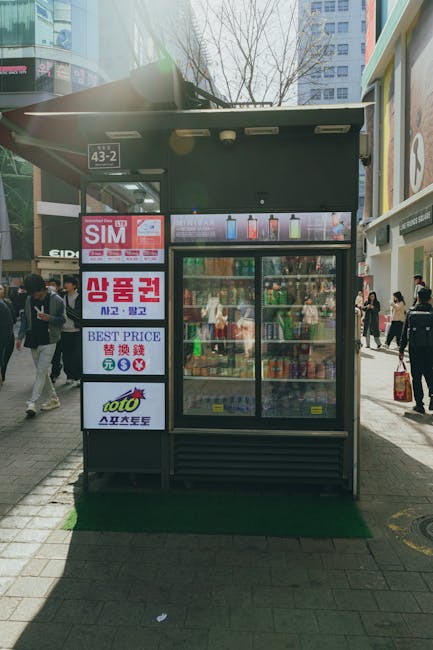A website’s Uniform Resource Locator (URL) serves as its digital address, a precise identifier that not only guides users to specific content but also acts as a critical signal for search engine crawlers. Understanding and optimizing URL structure is a foundational element of effective on-page SEO, influencing everything from crawlability and indexability to user experience and click-through rates. The inherent clarity, relevance, and technical correctness of a URL directly communicate to both human visitors and sophisticated algorithms what a page is about, its hierarchical position within a site, and its overall trustworthiness.
Deconstructing the URL: An Anatomical View for SEO
To truly grasp the implications of URL structure for SEO, a detailed understanding of its constituent parts is essential. Each component plays a role in how search engines interpret and value a web page.
-
Scheme (Protocol): The initial segment, typically
http://orhttps://, dictates the communication protocol.HTTPS, or Hypertext Transfer Protocol Secure, signifies that communication between the user’s browser and the website is encrypted. From an SEO perspective, Google has explicitly stated that HTTPS is a lightweight ranking signal, advocating for a secure web. Beyond the direct ranking benefit, HTTPS fosters user trust, which can indirectly influence engagement metrics and conversions. A site operating on HTTP without migrating to HTTPS is missing a fundamental SEO and security best practice. The transition from HTTP to HTTPS requires careful planning, including proper 301 redirects from all HTTP versions of URLs to their HTTPS counterparts, to preserve link equity and prevent duplicate content issues. -
Subdomain: Positioned before the main domain (e.g.,
blog.example.com,shop.example.com), subdomains can compartmentalize large websites or host distinct functionalities. While historically, subdomains were sometimes treated as separate entities by search engines, Google has increasingly demonstrated the ability to understand their relationship to the root domain. However, from an SEO architecture standpoint, consolidating content on the main domain using subdirectories (e.g.,example.com/blog/,example.com/shop/) is generally preferred. This approach often consolidates authority and link equity to a single domain, simplifying SEO management and potentially yielding stronger cumulative ranking signals. The decision between subdomains and subdirectories should be weighed carefully, considering the scale, purpose, and long-term SEO strategy of the different site sections. For very distinct applications or geographic targeting, subdomains might still be a valid choice, but the default preference for most content aggregation and topical relevance building is subdirectories. -
Domain Name (Second-Level Domain and Top-Level Domain): The core of the URL (e.g.,
example.com). The Second-Level Domain (SLD) is the unique name chosen by the website owner (e.g., “example”), and the Top-Level Domain (TLD) is the suffix (e.g., “.com”, “.org”, “.net”, “.co.uk”). While exact-match domain names no longer offer the significant SEO advantage they once did, a memorable, brandable, and relevant domain name is still crucial for branding, direct traffic, and overall authority building. Generic TLDs like .com are generally preferred for global reach, while country-code TLDs (ccTLDs) like .de or .fr are strong signals for country-specific targeting. The choice of TLD can influence geo-targeting signals to search engines. -
Port (Implied): While rarely visible in standard URLs, the port number (e.g.,
:80for HTTP,:443for HTTPS) indicates the specific communication endpoint on the server. For the vast majority of web browsing, these are the default ports and are therefore omitted from the URL displayed to the user. From an SEO perspective, explicit port numbers in URLs can create duplicate content issues if the same content is accessible via both standard and non-standard ports. Ensuring that content is served consistently on default ports and any non-standard access is redirected to the preferred version is a minor but important technical detail. -
Path (Directory Structure and File Name): This is the most SEO-significant part of the URL, following the domain name (e.g.,
/category/subcategory/product-name.html). The path represents the hierarchical organization of content on the website.- Directory Structure: A well-organized path reflects the site’s information architecture, making it intuitive for both users and search engines to understand the relationship between different pages. For instance,
/blog/seo-tips/url-structure-guide/clearly indicates that “url-structure-guide” is an article about “seo-tips” within the “blog” section. This logical categorization helps search engines build a clear mental model of the site’s content and topical authority. - File Name (Slug): The final segment of the path, often referred to as the “slug,” is the most direct opportunity to include relevant keywords that accurately describe the page’s content. A descriptive slug like
understanding-url-structure.htmlis far more valuable thanpageid=123orp=456. It reinforces the page’s topic to search engines and provides a preview of the content to users.
- Directory Structure: A well-organized path reflects the site’s information architecture, making it intuitive for both users and search engines to understand the relationship between different pages. For instance,
-
Query String (Parameters): Appended after a question mark (
?) and consisting of key-value pairs (e.g.,?color=red&size=large), query strings are used to pass dynamic data to the server. Common uses include filters, sorting options, session IDs, and tracking parameters. While necessary for dynamic functionality, query strings often create multiple URLs for essentially the same content (e.g.,example.com/products?color=redandexample.com/products?color=blue). This can lead to significant duplicate content issues, dilute link equity, and cause inefficient crawling. SEO best practices for dynamic URLs involve:- Canonicalization: Using the
rel="canonical"tag to point all variant URLs to a single, preferred version. - Parameter Handling in GSC: While Google Search Console’s URL Parameter tool has become less critical as Google’s understanding of parameters has improved, it still offers insights and control for highly complex or problematic parameter configurations.
- Blocking via Robots.txt: In extreme cases, if parameters create an excessive number of low-value, duplicate pages,
Disallowdirectives inrobots.txtcan prevent crawling, though canonicalization is generally preferred for allowing discovery while controlling indexing.
- Canonicalization: Using the
-
Fragment Identifier (Anchor): Indicated by a hash tag (
#) followed by a string (e.g.,example.com/page#section2), fragment identifiers point to a specific section within a page. Importantly, search engines typically ignore fragment identifiers when crawling and indexing. They are client-side only and do not represent a unique page for SEO purposes. While useful for user navigation within long articles (e.g., table of contents), they do not impact how the URL is indexed or ranked as a distinct entity.
Pillars of SEO-Friendly URL Structure: Core Principles
Building an effective URL structure hinges on adhering to several foundational principles that balance technical considerations with user experience.
-
Readability and User-Friendliness: The most crucial principle is that URLs should be immediately comprehensible to a human being. A URL like
example.com/blog/2023/10/how-to-optimize-your-website-for-googleis vastly superior toexample.com/p?id=45678&cat=32&sess=abc. Readability benefits both users and search engines. Users are more likely to click on a URL they understand, and they can infer content from the URL before even visiting the page. Search engines also interpret clear URLs as a sign of a well-organized and user-centric website. This clarity contributes to higher click-through rates (CTR) in search results, as users can quickly assess the relevance of the link. -
Strategic Keyword Inclusion: Integrating relevant keywords into the URL slug can reinforce the page’s topic for both users and search engines. When a user sees
example.com/best-espresso-machines, they instantly know the page is about espresso machines. This keyword inclusion acts as a subtle but direct on-page signal. However, this must be done strategically and naturally. Avoid keyword stuffing (e.g.,example.com/buy-best-cheap-espresso-machines-sale-online) as it can appear spammy to both users and search engines and can result in penalties or lower rankings. The chosen keywords should accurately reflect the page’s primary topic and ideally align with the page’s title tag and H1 heading for consistency. -
Conciseness and Brevity: Shorter URLs are generally preferred. They are easier to remember, type, share, and less prone to truncation in search results or social media. While there’s no strict character limit for URLs, extremely long URLs can be intimidating and reduce perceived trustworthiness. Google’s algorithms can parse long URLs, but the user experience aspect is paramount. Aim for the shortest possible URL that still accurately and descriptively represents the content and includes strategic keywords. Brevity also simplifies internal linking and backlink acquisition, as cleaner URLs are more appealing to link to.
-
Static vs. Dynamic URLs: Search engines, particularly in their earlier days, found it challenging to crawl and index dynamic URLs with multiple parameters. While their capabilities have advanced significantly, static or “clean” URLs (e.g.,
example.com/product/red-shirt) are still universally preferred over dynamic ones (e.g.,example.com/products.php?id=123&color=red). Clean URLs are more user-friendly, appear more trustworthy, and are less likely to cause duplicate content issues. Modern CMS platforms typically offer “pretty permalink” options to convert dynamic URLs into static ones, often utilizing server-side URL rewriting (e.g., via.htaccessrules on Apache servers ornginxrewrite rules). For unavoidable dynamic parameters, comprehensive canonicalization strategies are essential. -
Use of Hyphens for Word Separation: When separating words in the URL path, hyphens (-) are the universally accepted and recommended separator. Google explicitly states that hyphens are preferred over underscores (
_) because they treat hyphens as word separators, allowing them to better understand the individual terms within the URL. Underscores, conversely, are often treated as word joiners, makingseo_tipsappear as a single word “seotips” to the algorithm, which is less semantically useful. Consistently using hyphens ensures maximum clarity and optimal interpretation by search engines. -
Lowercase Letters: All characters in URLs should ideally be lowercase. This is crucial for consistency and avoiding potential duplicate content issues. Some web servers treat URLs with different casing as distinct pages (e.g.,
example.com/Pageversusexample.com/page), even if they serve the same content. This can lead to crawling inefficiencies, split link equity, and duplicate content penalties. Implementing server-side redirects (301 redirects) to force all URLs to lowercase is a common and effective solution, ensuring that only one canonical version of each URL is accessible and indexed. -
Eliminating Stop Words: Stop words (e.g., “a,” “an,” “the,” “for,” “and,” “in,” “of”) are common, high-frequency words that generally add little semantic value to a URL’s keyword signals. While they can sometimes aid readability, removing them when possible contributes to conciseness without sacrificing meaning. For example,
how-to-optimize-website-seois often better thanhow-to-optimize-your-website-for-seo. However, if removing a stop word significantly impairs readability or clarity, it’s better to retain it. The rule of thumb is to remove them if the URL remains clear and descriptive. -
Logical Directory Structure (Information Architecture): The URL path should mirror the site’s logical hierarchy. This means using a structure like
/category/subcategory/product-nameor/blog/year/month/post-title. This organized approach provides context to both users and search engines about where the page fits within the broader site. It aids in internal linking, supports breadcrumb navigation, and helps search engines understand the topical relationships between different sections of the website. A clear hierarchy assists search engines in prioritizing crawling and understanding the depth of content in specific areas. For instance, a URL likeexample.com/electronics/laptops/gaming-laptops/acer-predatorclearly outlines the path and relationship. -
Canonicalization (URL Standardization): This is a paramount concept for large or complex websites. Canonicalization is the process of defining a single, authoritative URL for a piece of content that might be accessible via multiple URLs. Common scenarios leading to duplicate URLs include:
wwwvs.non-wwwversions (www.example.comvs.example.com)HTTPvs.HTTPSversions- Trailing slash vs. non-trailing slash (
example.com/page/vs.example.com/page) - URLs with different casing
- URLs with various tracking parameters (
example.com/product?ref=abcvs.example.com/product) - Content accessible through different paths (e.g., a product listed in multiple categories)
- Printer-friendly versions, session IDs, or pagination.
The primary method for canonicalization is therel="canonical"HTML tag, placed in thesection of the duplicate page, pointing to the preferred version. Alternatively, 301 redirects are used when one URL version should permanently redirect to another (e.g., HTTP to HTTPS, non-www to www). Neglecting canonicalization can lead to search engines splitting link equity across duplicate URLs, inefficient crawling, and potentially a lower ranking for the intended canonical page.
-
Trailing Slashes: Consistency with trailing slashes is crucial.
example.com/page/andexample.com/pagecan be treated as two distinct URLs by web servers, leading to duplicate content. While Google has clarified that for the root domain and subdomains, a trailing slash doesn’t matter (e.g.,example.com/andexample.comare the same), for subdirectories and pages, consistency is key. Sites should choose one format (with or without a trailing slash for directories/pages) and implement 301 redirects to ensure all variations resolve to the single preferred version. Server configuration (e.g., Apache’smod_rewrite, Nginx configurations) is typically used to enforce this consistency. -
HTTPS (Security and SEO): Reiterating its importance, HTTPS is no longer just an option but a standard. Google uses it as a minor ranking signal, and browsers increasingly flag HTTP sites as “not secure,” deterring users. The migration to HTTPS involves obtaining an SSL/TLS certificate, configuring the web server, and meticulously redirecting all HTTP URLs to their HTTPS counterparts using 301 redirects. This process must be carefully executed to avoid temporary dips in rankings or loss of link equity. Mixed content issues (where an HTTPS page loads HTTP resources) must also be addressed.
Advanced Considerations and Common Pitfalls in URL Management
Beyond the core principles, several advanced scenarios and potential traps demand careful attention when optimizing URL structures.
-
Pagination URLs: For large content sets (e.g., blog archives, product listings), pagination is common, creating URLs like
example.com/category?page=2orexample.com/category/page/2/. Historically,rel="next"andrel="prev"tags were used to signal the relationship between paginated pages. However, Google announced in 2019 that they no longer use these tags for indexing purposes, stating they are adept at understanding paginated content without them. Current best practice often involves:- Self-referencing canonicals: Each paginated page should have a self-referencing canonical tag (e.g.,
page=2canonicalizes topage=2). - Canonical to “view all” page: If a “view all” version of the content exists (all items on a single page), that page can be canonicalized to the single “view all” URL. This concentrates link equity but can lead to very large, slow-loading pages.
- Noindex for redundant pages: For pages that add no unique value or are simple duplicates created by sorting/filtering, a
noindextag can be considered, but this should be used cautiously as it prevents indexing.
The primary focus should be on ensuring that important content on paginated pages is discoverable and crawlable, with clear internal linking.
- Self-referencing canonicals: Each paginated page should have a self-referencing canonical tag (e.g.,
-
Filtering and Sorting URLs: E-commerce sites heavily rely on filters (e.g., by color, size, brand) and sorting options (e.g., price low to high, newest). These often generate unique URLs for each combination of parameters (e.g.,
example.com/shoes?color=blue&size=10). This is a prime source of duplicate content. Effective handling involves:- Canonicalization: Pointing all filter/sort combinations back to the main category page (e.g.,
example.com/shoes/). This is often the most robust solution. robots.txtdisallows: For parameters that create an unmanageable number of low-value, duplicate URLs, disallowing them inrobots.txtcan prevent crawling, but this means Google won’t discover content unique to those URLs.- Google Search Console Parameter Handling: While less central, GSC still allows site owners to inform Google how to treat specific URL parameters (e.g., “No URLs,” “Crawl only,” “Represent chosen URL”). This can help Google understand which parameters change content and which don’t.
- JavaScript-driven filtering: Implementing filters and sorting dynamically via JavaScript and AJAX, without changing the URL, can prevent URL proliferation, but care must be taken to ensure the content is still discoverable and indexable if rendered clientside.
- Canonicalization: Pointing all filter/sort combinations back to the main category page (e.g.,
-
Multi-language/Geo-targeting URLs: For international websites, URL structure is a key signal for targeting specific regions or languages. Common patterns include:
- Subdirectories:
example.com/es/for Spanish,example.com/fr/for French. This is often preferred as it consolidates domain authority. - Subdomains:
es.example.com,fr.example.com. Can be useful for distinct regional operations but might dilute authority. - Country-Code Top-Level Domains (ccTLDs):
example.es,example.fr. The strongest signal for geo-targeting, but requires managing separate domains.
Regardless of the chosen structure, correct implementation of thehreflangattribute is critical.hreflangtells search engines about the language and geographical targeting of alternative versions of a page, preventing duplicate content issues across different language/region variations.
- Subdirectories:
-
AMP URLs: Accelerated Mobile Pages (AMP) create a separate, stripped-down version of a page, often hosted on a Google domain or a CDN. AMP URLs typically have a
rel="amphtml"tag pointing to the AMP version from the canonical HTML page, and the AMP page has arel="canonical"tag pointing back to the original HTML page. This relationship is crucial for search engines to understand that the AMP page is an alternative presentation of the same content and not a duplicate. -
URLs for Dynamic Content (e.g., e-commerce product variants): When a product has multiple variations (color, size, material), ideally, each unique product gets a clean, static URL (e.g.,
example.com/product/red-t-shirt). However, sometimes product variants are handled with URL parameters (e.g.,example.com/product?sku=123). In such cases, if the variants truly represent distinct user experiences or unique content (e.g., different product descriptions or images), they might warrant their own URLs, but robust canonicalization pointing back to the “main” product page or a preferred variant page is essential to manage potential duplicate content. -
Broken URLs and 404s: URLs that return a “404 Not Found” error are detrimental to both user experience and SEO. They signify dead ends for users and indicate to search engines that the page no longer exists. While a few 404s are normal, an excessive number can signal a poorly maintained site, leading to crawl budget waste and potentially impacting rankings. Regular auditing (via Google Search Console’s “Crawl Errors” report or third-party tools) and implementing 301 redirects for moved or deleted pages are critical. Custom 404 pages that guide users back to relevant content can mitigate the negative UX impact.
-
URL Redirects (301, 302): Redirects are fundamental for managing URL changes.
- 301 Permanent Redirect: The SEO gold standard. It tells search engines that a page has permanently moved to a new location and passes almost all (90-99%) of the link equity (PageRank) from the old URL to the new one. Use 301s for domain migrations, URL structure changes, HTTP to HTTPS transitions, or consolidating duplicate URLs.
- 302 Found (Temporary Redirect): Signals a temporary move and generally passes little to no link equity. Rarely used for SEO purposes unless the move is truly short-term (e.g., A/B testing, seasonal promotion). Using a 302 where a 301 is needed is a common SEO mistake that can lead to significant loss of organic visibility.
Implementing redirects efficiently, often at the server level (e.g.,.htaccessfiles, Nginx configuration), is crucial to maintain SEO performance during site changes.
-
URL Versioning/Updates: While maintaining consistent URLs is ideal, sometimes changes are necessary (e.g., restructuring categories, renaming a product). When a URL must change, a 301 redirect from the old URL to the new one is absolutely non-negotiable. Without it, all existing backlinks to the old URL are lost, and search engines lose the mapping to the new content, resulting in significant ranking drops. Minimize URL changes where possible, but when they occur, prioritize meticulous redirect implementation.
-
Impact on Internal Linking: A clean, predictable URL structure makes internal linking more efficient and effective. When URLs are descriptive, internal links can use more relevant anchor text that aligns with the target page’s URL and content, reinforcing topical relevance for search engines. This also makes it easier for content creators and editors to link correctly without errors.
-
Impact on Backlinks: URLs that are easy to understand, memorable, and concise are inherently more shareable. When external websites link to your content, a clean URL reinforces the quality and professionalism of your site. If your URLs are messy or change frequently without proper redirects, you risk losing valuable backlink equity, which is a significant factor in search rankings.
Implementation Strategies and Tools for URL Optimization
Successfully optimizing URL structure involves both strategic planning and the effective use of various tools and technical configurations.
-
Content Management Systems (CMS) URL Settings: Most modern CMS platforms provide robust options for managing URL structures.
- WordPress: Utilizes “Permalinks” settings. The most SEO-friendly option is usually “Post name” (
/%postname%/) or a custom structure that includes categories (/%category%/%postname%/). It’s crucial to set this before a site goes live or as early as possible, as changing permalinks on an established site requires careful 301 redirect management. Plugins like Yoast SEO or Rank Math often offer additional control over URL slugs. - Joomla, Drupal, Shopify, Magento: Each CMS has its own configuration for “SEO URLs” or “Search Engine Friendly URLs.” Ensure these settings are enabled and configured to generate clean, descriptive URLs. For e-commerce platforms, particular attention must be paid to product and category URL structures to avoid excessive parameters or overly long paths.
- Custom CMS: For custom-built websites, developers must implement URL rewriting rules at the server level (e.g., using
mod_rewritefor Apache orrewritedirectives for Nginx) to transform dynamic URLs into clean, static-looking ones.
- WordPress: Utilizes “Permalinks” settings. The most SEO-friendly option is usually “Post name” (
-
Htaccess/Server Configuration: For Apache web servers, the
.htaccessfile is a powerful tool for URL manipulation. It’s used for:- URL Rewriting: Converting dynamic URLs to clean URLs (e.g.,
RewriteRule ^product/([0-9]+)/?$ /product.php?id=$1 [NC,L]). - Implementing 301 Redirects:
Redirect 301 /old-page.html /new-page.htmlorRewriteRule ^old-directory/(.*)$ /new-directory/$1 [R=301,L]. - Enforcing HTTPS:
RewriteCond %{HTTPS} offandRewriteRule (.*) https://%{HTTP_HOST}%{REQUEST_URI} [R=301,L]. - Canonicalizing www/non-www and trailing slashes: Rules can be set to force all traffic to a preferred version.
For Nginx servers, similarrewriterules are configured within the Nginx configuration files. These server-level configurations are highly efficient as they handle redirects and URL transformations before the request even reaches the CMS application.
- URL Rewriting: Converting dynamic URLs to clean URLs (e.g.,
-
Google Search Console (GSC) for URL Management: GSC provides invaluable insights and tools related to how Google interacts with your URLs:
- URL Inspection Tool: Allows you to fetch and inspect individual URLs, see how Google sees them, check for indexing issues, crawl errors, and mobile usability. This is critical for diagnosing specific URL problems.
- Coverage Report: Shows which pages are indexed, excluded, or have errors. It helps identify issues like duplicate content (often stemming from URL variations), redirect errors, or soft 404s.
- Crawl Stats Report: Provides data on Googlebot’s activity on your site, helping you understand if your URL structure is facilitating efficient crawling.
- Removals Tool: While not for SEO optimization per se, it allows you to temporarily hide URLs from Google search results if sensitive content was accidentally published or if an urgent removal is needed.
- Parameter Handling (Legacy): Although less emphasized now, understanding how to configure parameter handling for specific query string parameters in GSC can still be useful for highly complex sites or when diagnosing specific issues.
-
Sitemaps and URLs:
- XML Sitemaps: These files (
sitemap.xml) list all the URLs you want search engines to crawl and index. They act as a roadmap for crawlers, especially for large sites or those with content that might not be easily discoverable through internal linking. An accurate XML sitemap containing only canonical, indexable URLs is crucial. Update sitemaps regularly when new content is added or URLs change. - HTML Sitemaps: User-facing pages that list the site’s main categories and pages. While not a direct SEO ranking factor, they improve user navigation and ensure all important content is internally linked, aiding discoverability for both users and search engines. They also often use clean, optimized URLs.
- XML Sitemaps: These files (
-
Auditing Existing URL Structures: For established websites, a comprehensive URL audit is often necessary to identify and fix issues. Tools like:
- Screaming Frog SEO Spider: A desktop crawler that can simulate how search engines crawl your site, identifying issues like duplicate URLs, broken links (404s), redirect chains, non-canonical URLs, and URLs with problematic parameters.
- Ahrefs, SEMrush, Moz Pro: These comprehensive SEO suites offer site audit features that analyze URL health, identify crawl errors, duplicate content, and provide recommendations.
- Google Search Console: As mentioned, its reports are invaluable for identifying URL-related problems.
An audit should look for: - URLs that are too long or contain unnecessary parameters.
- URLs that are not descriptive or keyword-rich.
- Duplicate content issues due to URL variations (e.g., casing, trailing slashes, www/non-www).
- Broken links and redirect loops.
- Inconsistent URL patterns across the site.
Prioritize fixes based on the severity of the issue and the potential impact on SEO and user experience.
The Interplay of URL Structure with Other On-Page Elements
URL structure does not exist in isolation; its effectiveness is amplified when it aligns seamlessly with other on-page SEO factors, creating a cohesive and powerful signal to search engines and users.
-
Title Tags and Meta Descriptions: The URL appears alongside the title tag and meta description in search engine results pages (SERPs). A descriptive, keyword-rich URL complements a compelling title and meta description, enhancing the overall perceived relevance and increasing the likelihood of a click. When the URL clearly telegraphs the page’s content, it instills greater confidence in the user that they will find what they are looking for. Consistency in keywords across the URL, title tag, and H1 heading signals a strong topical focus.
-
Content Relevance: Fundamentally, the URL must accurately reflect the content it serves. A URL like
example.com/best-coffee-makersshould lead to a page about coffee makers, not blenders. Misleading URLs create a poor user experience, leading to high bounce rates, and can confuse search engines about the page’s actual topic. The congruence between the URL, the page’s main topic, and the on-page content (headings, body text) is crucial for search engines to confidently rank the page for relevant queries. -
Headings (H1-H6): The primary heading (H1) of a page should typically mirror the main topic indicated by the URL and title tag. This internal consistency strengthens the page’s topical relevance. For instance, if the URL is
example.com/guide/on-page-seo-basics, the H1 heading “On-Page SEO Basics: Your Comprehensive Guide” creates a logical flow and reinforces the page’s subject matter to both users and crawlers. -
Internal Linking: A clean and logical URL structure greatly facilitates internal linking. When linking from one page to another, using descriptive anchor text that includes keywords found in the target page’s URL further strengthens the topical connection. For example, linking to
example.com/learn/keyword-researchwith the anchor text “understanding keyword research” is more powerful than using a generic “click here.” Well-structured URLs make it easier to build a robust internal link profile that accurately distributes link equity and signals topical authority within the site. -
User Experience (UX): Beyond direct SEO signals, an optimized URL structure significantly enhances user experience. Users can:
- Understand content at a glance: The URL gives an immediate preview of what the page is about.
- Navigate more easily: A logical directory structure in the URL (e.g.,
/category/subcategory/) helps users understand their location within the site and can even be manually edited in the address bar to navigate up a level. - Trust the website more: Clean, descriptive URLs appear professional and legitimate, in contrast to messy, parameter-laden URLs often associated with spam or low-quality sites.
- Share links confidently: Concise, memorable URLs are more likely to be shared on social media, in emails, or through other channels.
In conclusion, a robust URL structure is far more than just a naming convention; it is an integral component of a successful SEO strategy. By adhering to principles of clarity, conciseness, keyword relevance, and technical correctness, site owners can significantly improve their website’s crawlability, indexability, ranking potential, and overall user experience. It’s a foundational element that underpins the entire on-page optimization effort, acting as a clear, communicative bridge between a website’s content and the complex algorithms of search engines, as well as the discerning eyes of human visitors.











